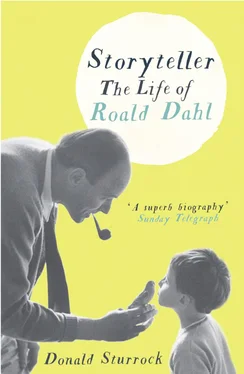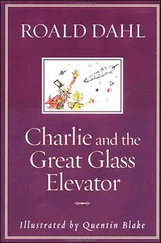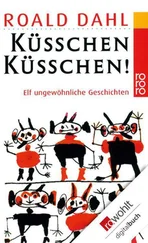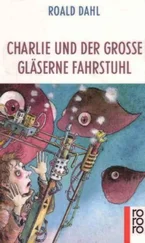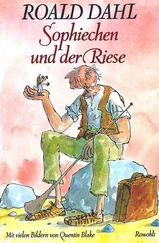The visual arts were an important and little understood aspect of Roald Dahl’s life and formed a continuous counterpoise to his literary activities. All his life he bought and sold paintings, furniture and jewellery — sometimes to supplement his literary earnings. He even opened an antique shop. That connection between business and art, which came as naturally to him as breathing, would puzzle and irritate many of Dahl’s English literary contemporaries, who resented his skill at making money and disliked the pride he took in his own financial successes. It frequently caused misunderstandings. The British novelist Kingsley Amis was typical. In his memoirs, he described his only meeting with Dahl. It was at a party given by Tom Stoppard in the early 1970s. There, Roald apparently suggested to Amis that, if he was suffering from “financial problems”, he should consider writing a children’s book, and went on to describe how he might go about doing so. Amis, who had no interest in children’s fiction, felt he was being patronized by Dahl’s suggestion that his own writing was not bringing him enough money. Dahl, for his part, was in precisely the kind of English literary environment he loathed. He knew that Amis, like most of the guests, did not respect children’s writing as proper literature and this attitude made him feel vulnerable. Drunk and ill at ease, he probably felt that the only way to keep his head up with Amis was to talk money. The clash of attitudes was bitter and fundamental. Noting that Dahl departed by helicopter, Amis concluded: “I watched the television news that night, but there was no report of a famous children’s author being killed in a helicopter crash.” 26
The need for financial success was in Roald’s blood. His father and his uncle Oscar had both evolved into shrewd businessmen. When the two brothers eventually separated in Paris, Oscar travelled to La Rochelle, on the west coast of France, with his new wife, Therese Billotte, whom he had rescued from a fire in 1897 at the Bazar de la Charite. As with the fire in Grue, this had killed over one hundred people. 27Billotte was from a family of painters. Her grandfather was the French writer and artist Eugene Fromentin, most famous for his naturalistic depictions of life in North Africa, while her uncle, Rene Billotte, was a commercial landscape painter, whose murals of exotic scenes still decorate Le Train Bleu, the elaborate gilded dining room of Paris’s main railway station to the South, the Gare de Lyon. In La Rochelle, Oscar started a company of fishing trawlers called Pecheurs d’Atlantique. His fleet began the practice of canning its catch on board ship, and became so successful that Roald could justifiably boast after the war that his uncle was “the wealthiest man in town”. 28With the money he made, Oscar indulged himself. He purchased the Hôtel Pascaud, an elegant eighteenth-century town house, and filled it with exquisite objects. Roald would later fondly describe it as “a museum dedicated to beauty”. 29
Oscar was a complex character. He was an aesthete but, like his father Olaus, also something of a bully. Roald would always have a turbulent relationship with him. During the war Oscar remained in Occupied France, collaborating with the Nazis, while his son fought in the Resistance. One family legend has it that, after the war was over, he was publicly tarred and feathered by a group of bitter locals and that father and son never spoke again. However, what is certain is that this exotic French uncle, with his Viking appearance and fastidious taste, left an indelible impression on his young nephew — if only for his facial hair.
My late uncle Oscar… had a massive hairy moustache, and at meals he used to fish out of his pocket an elongated silver scoop with a small handle on it. This was called a moustache-strainer and he used to hold it over his moustache with his left hand as he spooned his soup into his mouth with his right. This did prevent the hair-ends from becoming saturated with lobster bisque … but I used to say to myself, “Why (doesn’t he just clip the hairs shorter? Or better still, just shave the (damn thing off altogether and be done with it?” But then Uncle Oscar was the sort of man who used to remove his false teeth at the end of dinner and rinse them in his finger-bowl? 30
Harald’s temperament, like his moustache, was less extrovert than his brother’s. And he remained in Paris a little longer. However, some time in the 1890s, when he decided that he was tired of the vie bohemienne, he headed not to La Rochelle but to South Wales, to the coal metropolis of Cardiff, where he had heard that enterprising Norwegians could make their fortune.
* Most of the Vaernes farmlands have now been subsumed into Trondheim Airport, but the actual building Hans Theodor owned is still standing. He is buried nearby in the cemetery of Vaernes Church.
† Confusingly, the capital of Norway has undergone several changes of name. Ancient Norse Oslo was renamed Christiania in 1624 after King Christian IV of Norway rebuilt it following a disastrous fire. In 1878, Christiania was refashioned as Kristiania, and in 1925, the city became Oslo once again.
CHAPTER TWO 
Shutting Out the Sun
THE HISTORY OF TRADING between Norway and South Wales goes back well over a thousand years. Medieval chroniclers writing of the land of Morgannwg, now Glamorgan, in the period between the Roman settlement and the Norman Conquest celebrated the visits of Norwegian traders, comparing them favourably to the “black heathens”, 1the Danes, whose intentions often seemed more inclined toward rape and pillage than commerce. Curiously, recent evidence suggests that Welsh men and women, captured in the valleys and sold into slavery, may have been the first major commodity exported from Wales to Norway; 2however, by the mid-nineteenth century, trade in human souls had given way to a sophisticated, booming and lucrative business relationship based on timber, steel and above all, coal. Boats from Norway, already the third largest merchant fleet in the world, arrived in Cardiff with timber, mostly to use as pit props (which the Welsh miners called “Norways”), and left carrying coal and steel to all parts of the globe. In twenty years the city’s population doubled as it became the world’s major supplier of coal. By 1900, Cardiff was exporting 5 million tons of coal annually from more than 14 miles of seething dockside wharfage. Two thirds of these exports left in Norwegian-owned vessels. The city was consequently awash with commercial opportunities for an enterprising, intelligent young expatriate, tired of his sojourn in Paris and eager to make his fortune.
Cardiff, of course, already boasted a considerable number of resident Norwegian nationals. But the majority were transient sailors. In 1868, the Norwegian Mission to Seamen had constructed a little wooden church between the East and West Docks on land donated by the Marquis of Bute. It was a place of worship, but also a place where the ships’ crews, many of whom were as young as fourteen, could relax and read Norwegian books and newspapers, while the cargo on their boats was loaded and unloaded. A model ship hung from the ceiling, and the walls were decorated with Scandinavian landscapes and pictures of the royal families of Sweden, Denmark and Norway. The tables were even decorated with miniature Norwegian flags.
Up to 75,000 seamen passed through the Mission’s doors each year, eager for reminders of home in this hostile industrial environment. The docks were noisy, filthy, and could be terrifying — particularly to anyone from a rural background. An experienced Norwegian sea captain described the city: “It’s not difficult to find Cardiff from the sea,” he told his young nephew, who was about to sail there for the first time; “you just look for a very black sky — that’s the coal dust. In the middle of the dust, there is a white building, the Norwegian Seamen’s Church. When we see that we know we are home.” 3The tiny church, with its plucky spire, quickly became a symbol for the Norwegian community in Cardiff, although most who settled there integrated with the local Welsh community, and used it simply for births, marriages and deaths. 4Today it stands restored, looking out at redeveloped Cardiff Bay, as if saluting the most famous of its congregation, who was christened there in the autumn of 1916, and whose name now graces the public area between the church and the grey slate, golden steel modernity of the new Wales Millennium Centre: Roald Dahl. *
Читать дальше
